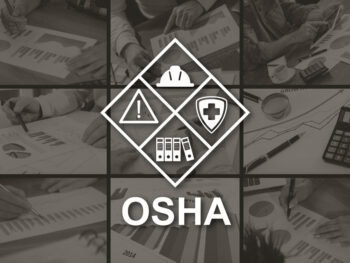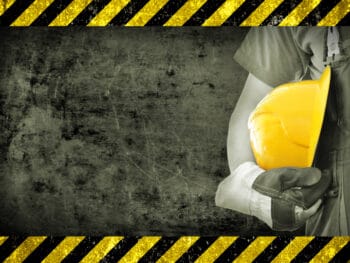We all know that the best workers compensation claim is the claim that never happened. We have written various articles on what management can do to prevent claims, including creating and/or improving a safety program. This top down approach is effective and leads to the prevention of accidents. What the top down approach often misses is the importance of having the supervisors actively involved in the safety program. The importance of safety training for the field supervisors or the floor supervisors cannot be overstated.
The safety responsibilities of the lower level management ( the supervisors ) need to be incorporated into the job descriptions just as much as production goals, financial goals or other performance measurements. The safety objectives that should be a part of the job description of every supervisor are (WCxKit)
- Regular inspections of the work area to identify any safety issues
- Responsibility for initiating work orders for safety related repairs
- Responsibility for insuring all needed repairs are completed timely
- Responsibility for identifying areas where improvements of the physical area would reduce risk
- Knowing and complying with all OSHA requirements
- Knowing and complying with all state safety laws
- Enforcing compliance with all safety regulations
- Responsibility for training all new employees on the safe completion of the work
- Responsibility for having monthly safety meetings with the employees in her/her group
- Responsibility for the safe completion of all work
- Responsibility for recording all safety incidents
- Responsibility for reporting all safety incidents to management
- Responsibility for investigating all accidents
- Responsibility for preventing the reoccurrence of similar accidents
- Responsibility for reviewing with management how to improve safety
The supervisor’s performance review should include how well they met the safety goals. Management should avoid the temptation to measure safety solely by the number of injury claims reported. The completion of regular safety inspections, the timeliness of repair orders, the compliance with OSHA and other regulations, the safety training provided to the employees and the recommendations on how to improve safety should be given equal weight with the number of injury claims reported. By placing the emphasis on the prevention of injuries as opposed to the number of injuries, you reduce the temptation of the supervisor to underreport the minor injuries that occur.
An importance safety function of the supervisor is to create a detailed accident report after each injury. A review of the quality of the accident investigations completed by the supervisor should be a part of the each performance review. The supervisor’s manager should check each accident report to determine if the injured employee and the co-workers/witnesses were properly interviewed. The object/ machinery/ equipment involved in the injury should be a part of the accident investigation with a determination if the accident was the employee’s fault or caused by a defect in the object/equipment/ machinery being used. A recommendation by the supervisor on how to prevent a similar accident from occurring in the future should be a part of the report.
Safety reporting is more than completing OSHA forms. It should entail a review of injury accidents by categories determined by management. Sample categories could include employee error, equipment/machinery malfunction and unforeseen. The purpose should be to identify areas where further safety improvements can be made.
The review of the safety work orders for repairs or improvements should also be included in the supervisor’s performance review. The supervisor’s manager should verify the supervisor is identifying and seeking to correct legitimate safety hazards. The accuracy and the effectiveness of the safety work orders will impact the overall outcome of the safety program. (WCxKit)
By integrating safety into the job performance of the supervisors, the compliance level with all safety requirements will improve and the number of workers compensation claims will be reduced.
Author Rebecca Shafer, JD, President of Amaxx Risk Solutions, Inc. is a national expert in the field of workers compensation. She is a writer, speaker, and publisher. Her expertise is working with employers to reduce workers compensation costs, and her clients include airlines, healthcare, printing/publishing, pharmaceuticals, retail, hospitality, and manufacturing. She is the author of the #1 selling book on cost containment, Workers Compensation Management Program: Reduce Costs 20% to 50%. Contact: RShafer@ReduceYourWorkersComp.com.
Editor Michael B. Stack, CPA, Director of Operations, Amaxx Risk Solutions, Inc. is an expert in employer communication systems and part of the Amaxx team helping companies reduce their Workers Compensation costs by 20% – 50%. He is a writer, speaker, and website publisher. Contact: Mstack@ReduceYourWorkersComp.com
WORKERS COMP MANAGEMENT GUIDEBOOK: www.WCManual.com
WORK COMP CALCULATOR: www.LowerWC.com/calculator.php
MODIFIED DUTY CALCULATOR: www.LowerWC.com/transitional-duty-cost-calculator.php
SUBSCRIBE: Workers Comp Resource Center Newsletter
Do not use this information without independent verification. All state laws vary. You should consult with your insurance broker or agent about workers comp issues.
©2012 Amaxx Risk Solutions, Inc. All rights reserved under International Copyright Law. If you would like permission to reprint this material, contact us at: Info@ReduceYourWorkersComp.com.















